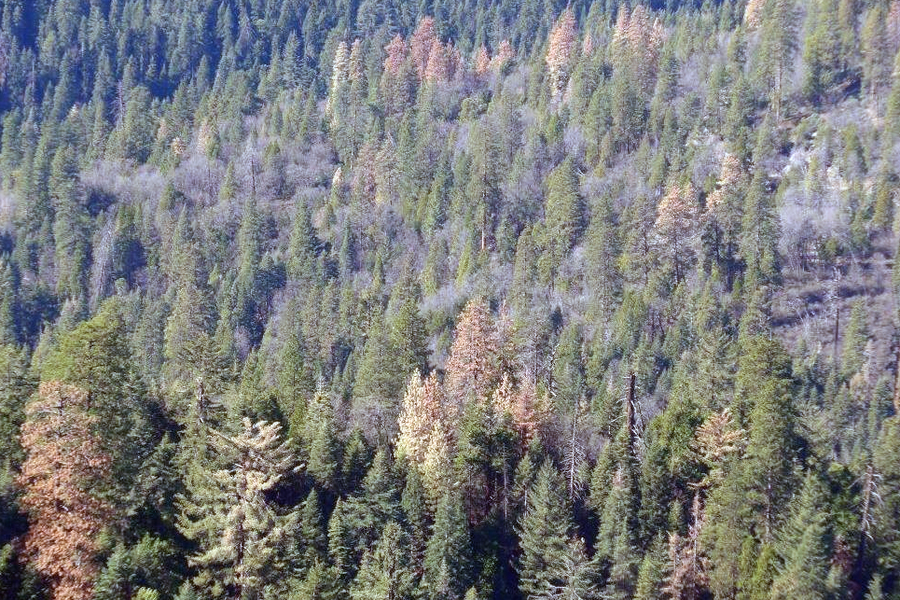Not just a western problem, drought threatens forests across US
Loading...
The effects of drought on the American West have been well documented. Scientists already have seen that unusually warm and dry conditions kill communities of trees, encourage bark beetle infestations that kill billions more, and spread intractable wildfires that consume everything in their paths.
These harmful effects, scientists say in a new paper, are likely to spread east, as drought conditions are expected to intensify, altering the distributions of species and the biodiversity of landscapes in the forests and rangelands nationwide.
And nobody yet knows how quickly and how badly drought will erode our forests.
“While eastern forests have not experienced the types of changes seen in western forests in recent decades, they too are vulnerable to drought and could experience significant changes with increased severity, frequency, or duration in drought,” scientists from 14 institutions, including Duke University, US Department of Agriculture and US Geological Survey, wrote in a paper published Monday in the peer-reviewed journal Global Change Biology.
The climate is changing too quickly for trees to adapt to the dry conditions, scientists say.
“As conditions become drier and warmer, many tree populations, especially those in eastern forests, may not be able to expand into new, more favorable habitats fast enough to keep up,” they say.
The idea behind the new research is to provide a foundation of our knowledge of current and future drought effects on forests nationwide to inform forest management practices that could help ease some of its harmful effects.
But it also brings to light the many unknowns that loom over our forests, hindering scientists' ability to make predictions about their future.
"We currently have a pretty good handle on predicting the impacts of climate change and drought on individual trees," said James Clark, lead study author and environmental scientist at Duke University.
"Ecologists have identified many of the important differences between species that explain how they respond differently to drought. But there's still uncertainty about what might happen at the species-wide or stand-wide levels, particularly in Eastern forests. These are the scales where we really need reliable predictions so forest managers can take steps now to help reduce large-scale problems," Dr. Clark said.
Monday’s paper is a synthesis of hundreds of peer-reviewed studies on the health of the nation’s forests and rangelands. It is part of a report released earlier this month by the agriculture department and the US Global Change Research Program.
The point of the report is to provide a repository of data describing today’s forest conditions. Land managers can use this information as a baseline against which to test their efforts to improve drought resilience and adaptation practices in the forests they manage.
According to US Agriculture Secretary Tom Vilsack, 60 million Americans rely on drinking water that comes from 193 million acres of national forest and grasslands. These areas also support 200,000 jobs and contribute more than $13 billion to local economies every year, he said.





